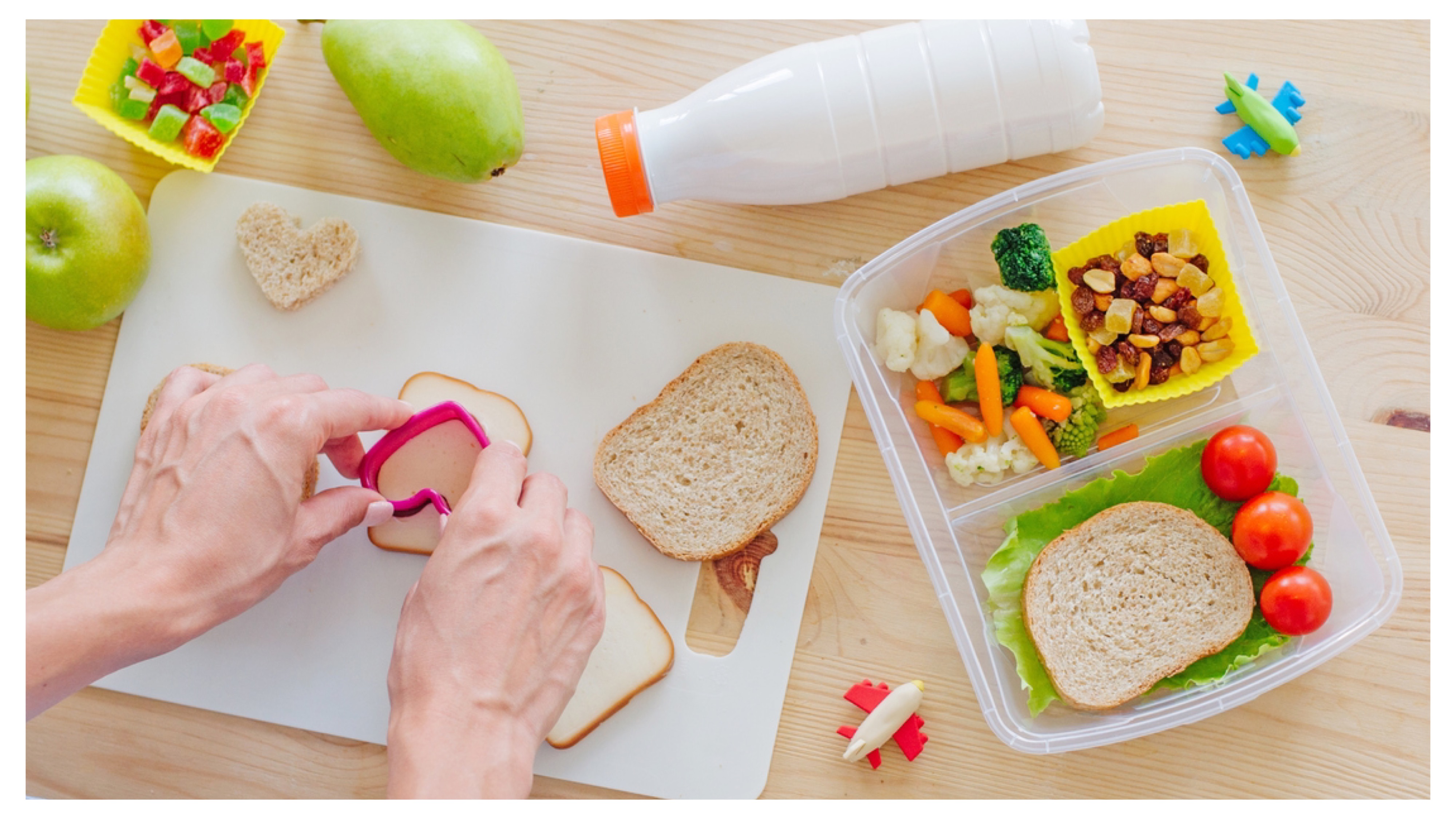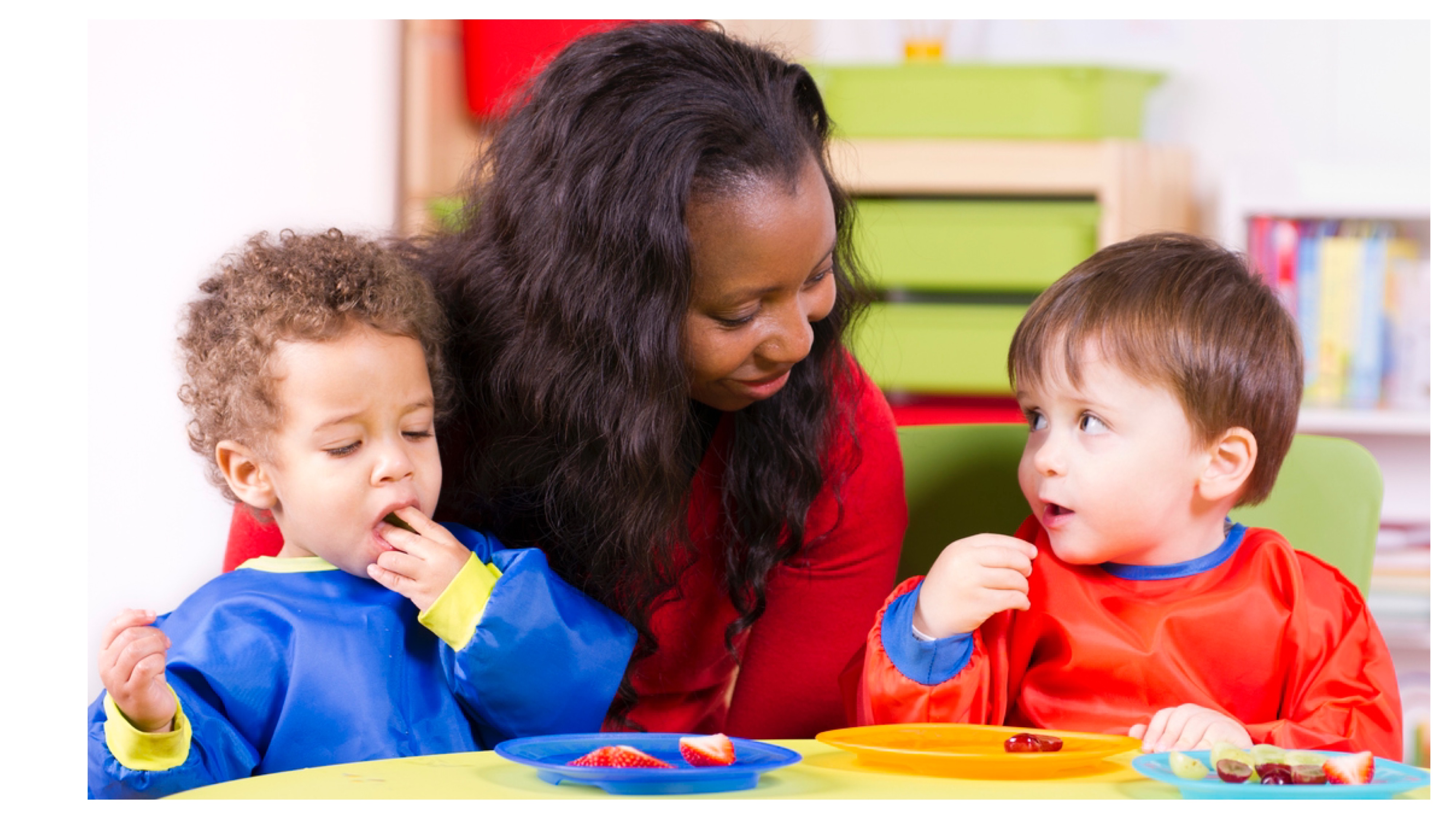
Feeding Help for Kids Starting School & Childcare
It’s that time of year again! Back-to-school (or the start of childcare) is just around the corner and many of the parents I have been meeting with this week are understandably worried...
"How will my little one with feeding difficulties do when eating at school or childcare?"
When kids don't eat well at school or childcare this can be very stressful for everyone - the parent, the school/childcare staff, and of course the child.
 Here’s the positive news!
Here’s the positive news!
Most of the children I see with feeding challenges benefit from attending school or childcare. Eating with other kids and following a structured meal/snack routine can help with their feeding development and can sometimes reduce picky eating. Kids' feeding skills can improve when they start school or daycare!
Why does school/childcare help kids?
- The childcare environment provides kids with exposure to new foods on a daily basis.
- School/childcare follows the recommended schedule of 2.5 hours between feedings to promote appetite. Appetite helps to reduce picky eating!
- Self-feeding – staff typically expect and encourage self-feeding to promote autonomy and child-led feeding.
- Food is offered for a limited time, which usually aligns with little attention spans (15-20 minutes) and thus eliminates grazing.
- Peer-modelling happens every day, at every meal and snack. Kids are provided with multiple repeated opportunities to learn about how other kids eat new foods, feed themselves, and drink from an open cup.
- Novelty! Sometimes a new feeder, a new environment, or a new friend can lead to new outcomes.

Feeding Tips for Back-to-School Kids!
Prepare Your Child in Advance:
- For school-aged kids, take your child shopping and let them choose their own cool lunchbox.
- During the weeks leading up to school, engage your child in helping to pack their lunch with you.
- Do a couple of mock “school lunches” at home each week - Ask your child to go and get their lunch box, bring it to the table, and practice opening the containers inside.
- I also find for that for picky eaters it helps to prepare them in advance for what will be in their lunch to avoid any sensory surprises – “Today I have packed your bread slices and a cheese string in your lunch.” This can reduce anxiety about what they will find when opening their lunchbox.
Always Include Safe/Preferred Foods:
Most of your child’s school lunch should be foods that your child likes and can eat successfully, but you can include one learning food in the lunchbox. Try cutting foods into fun shapes with a cookie cutter and using small colourful containers to make the food more fun and enticing!
 Whenever possible, engage your child in packing their lunch so they feel involved, in control, and prepared for lunch in the school environment.
Whenever possible, engage your child in packing their lunch so they feel involved, in control, and prepared for lunch in the school environment.
Feeding Tips for Little Ones Starting Childcare!
Brace Yourself for Bumps at the Beginning:
If your child demonstrates extreme food selectivity (picky eating) there may be an initial period of time where they do not eat well at childcare. I find that most of the kids with feeding issues that I work with take about 4-6 weeks to adjust to eating at childcare, so parents should brace themselves for a bit of a bumpy road at the beginning.
Good news again! With repeated exposure and a routine, many kids gradually begin to eat some of the new foods offered at childcare.
Your Feeding Therapist Can Help:
In more severe cases, where a child is not eating at childcare over long periods of time, a Feeding Therapist can work/consult with the childcare staff to develop a feeding program to support the child’s feeding development and goals. This sometimes involves making exceptions (especially for children with special needs) where parents are permitted to send a familiar food from home to ensure that the child receives some form of "safe food" for nutrition during the day. This food could be presented along with foods that the other kids are eating for ongoing daily food exposure.
As a Feeding Therapist, I work with the childcare staff to provide strategies to introduce new foods in a positive, responsive way.
- This might involve giving the child “helping” jobs like serving foods or scraping their plate at the end of the mealtime.
- It may also include training childcare staff to engage the child in sensory-based food acceptance steps or food play!
- A child may begin with just looking at new foods on their plate for the first few weeks, then progress to touching foods while clearing their plate, or learning to smell the foods ("Does it have a BIG smell or a little smell?"), or eventually kiss/lick the foods as they feel ready.
Feeding Tips for Childcare Providers and Teachers!
- Kids benefit from following a mealtime schedule with approximately 2.5 hours between feedings, so they come to the table with appetite.
- Mealtimes should be limited to around 20 minutes and snacks to 10 minutes. Some kids with special needs may benefit from more time to eat.
- Childcares can help kids by providing a preferred or “safe” food that a child can successfully eat. This lets them fill their tummy and get some nutrition during the day. Safe foods can be offered along with foods that the other kids are eating to provide repeated exposure.
- Kids benefit from being able to choose which foods they want to eat. Some childcare centres that I have visited practice family-style serving where foods are offered in bowls in the centre of the table and children can use tongs to choose foods to put on their own plate.
- Kids should not be pressured, pushed, or forced to eat foods. Research has demonstrated that this leads to negative feeding patterns and increased food refusal. When kids become anxious, their stress level goes up, which immediately reduces their appetite. Mealtimes should be fun, positive. and child-led.
- Avoid rewarding food with food (e.g., “You can have your fruit if you finish your chicken.” ) This sends a message that some foods are better than others - You have to eat the bad food to get to the good food. These tactics feel like pressure to little ones and can reduce their intake.
- The caregiver’s role is to decide where, when, and what is being offered to eat and the child’s role is to decide how much to eat or whether to eat at all. This is called the Division of Responsibility (Ellyn Satter).
- Kids do best when they control their eating and how much they eat. Let kids eat as much or as little as they choose. Food amounts should not be restricted or controlled. Kids should not be expected to finish their food due to concerns about “wasting food.”
For extreme picky eaters with restricted diets due to motor/sensory difficulties and children with special needs and medical issues, parents may consider enlisting their child’s Feeding Therapist to work in collaboration with the childcare to develop strategies to support the child's feeding outside of the home. I encourage parents to speak with the childcare supervisor/staff or their child’s teacher to foster a team approach to promote their child’s feeding development. A feeding plan always works best when everyone is on the same page supporting a child with a united feeding approach.
References:
- Batsell, W. R., Brown, A. S., Ansfield, M. E., & Paschall, G. Y. (2002). “You will eat all of that!”: A retrospective analysis of forced consumption episodes. *Appetite, 38*(3), 211–219. https://doi.org/10.1006/appe.2001.0485
- Harbron, J., & Booley, S. (2013). Responsive feeding: Establishing healthy eating behaviours early on in life. *South African Journal of Clinical Nutrition, 26*(3), 141–147.
- Mou, Y., Jansen, P. W., Raat, H., Nguyen, A. N., & Voortman, T. (2021). Associations of family feeding and mealtime practices with children's overall diet quality: Results from a prospective population-based cohort. *Appetite, 162*, 105174. https://doi.org/10.1016/j.appet.2021.105174
- Satter, E. (1983). Child of mine: Feeding with love and good sense. Kelcy Press.
- Satter, E. M. (2008). Stuff to know to have family meals. In Secrets of feeding a healthy family: How to eat, how to raise good eaters, how to cook (pp. 71–84). Madison, WI: Kelcy Press




